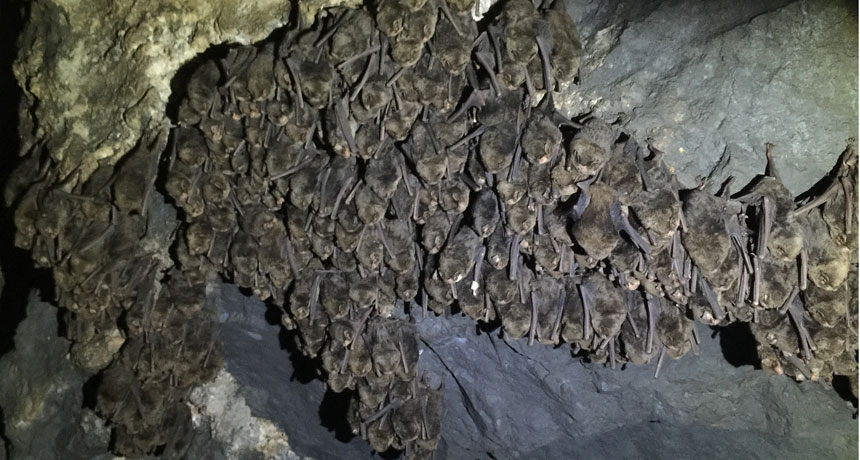bat A type of winged mammal comprising more than 1,100 separate species — or one in every four known species of mammal.
fungus (plural: fungi) One of a group of single- or multiple-celled organisms that reproduce via spores and feed on living or decaying organic matter. Examples include mold, yeasts and mushrooms.
hibernation A state of inactivity that some animals enter to save energy at certain times of year. Bears and bats, for example, may hibernate through the winter. During this time, the animal does not move very much, and the use of energy by its body slows down. This eliminates the need to feed for months at a time.
syndrome Two or more symptoms that together characterize a particular disease, disorder or social condition.
torpor A state of decreased activity in an animal. During torpor, an animal's body temperature falls and its cellular activity slows down.
white nose syndrome A fungal disease affecting bats. The fungus, Pseudogymnoascus destructans, lives in caves where bats hibernate through the winter. It causes a white dusting on their noses and on other areas of the body. The fungus causes dehydration and can eat holes through bats’ wings and blood vessels. Eventually, it weakens them, leaving them unable to fly and find food.

